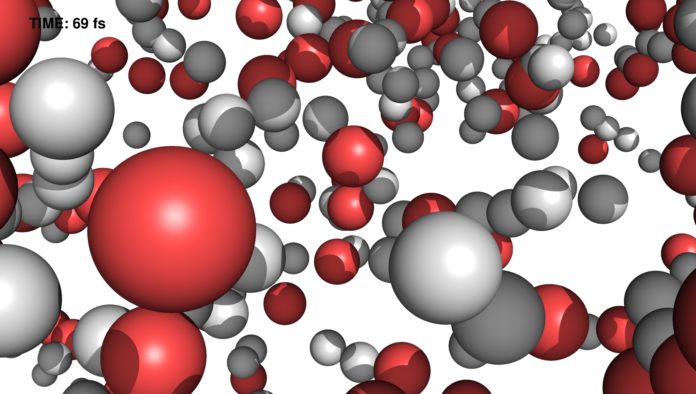Using X-ray Free-Electron Lasers, scientists have opened up way in structural biology, enabling imaging of biomolecules and dynamics that were impossible to access with conventional methods. They shoot extremely intense and ultra-short flashes of X-rays at a jet of water.
Scientists used Linac Coherent Light Source LCL to heat water from room temperature to 100,000 degrees Celsius in less than a tenth of a picosecond. The setup is now known as world’s fastest water heater that produces an exotic state of water, from which researchers hope to learn more about the peculiar characteristics of Earth’s most important liquid.
Carl Caleman from the Center for Free-Electron Laser Science (CFEL) at DESY and Uppsala University (Sweden) said, “It is certainly not the usual way to boil your water. Normally, when you heat water, the molecules will just be shaken stronger and stronger.”
“Our heating is fundamentally different. The energetic X-rays punch electrons out of the water molecules, thereby destroying the balance of electric charges. So, suddenly the atoms feel a strong repulsive force and start to move violently.”
“In less than 75 femtoseconds, that’s 75 millionths of a billionth of a second or 0.000 000 000 000 075 seconds, the water goes through a phase transition from liquid to plasma. A plasma is a state of matter where the electrons have been removed from the atoms, leading to a sort of electrically charged gas.”
Co-author Olof Jönsson from Uppsala University said, “But while the water transforms from liquid to plasma, it still remains at the density of liquid water, as the atoms didn’t have time to move significantly yet. It has similar characteristics as some plasmas in the sun and the gas giant Jupiter but has a lower density. Meanwhile, it is hotter than Earth’s core.”
Scientists used their estimations to approve reenactments of the procedure. Together, the estimations and reenactments enable them to examine this outlandish condition of water with a specific end goal to take in more about water’s general properties. The measurements show almost no structural changes in the water up to 25 femtoseconds after the X-ray pulse starts to hit it. But at 75 femtoseconds, changes are already evident.
Jönsson emphasized said, “Water really is an odd liquid, and if it weren’t for its peculiar characteristics, many things on Earth wouldn’t be as they are, particularly life.”
Kenneth Beyerlein from CFEL said, “It is important for any experiment involving liquids at X-ray lasers. In fact, any sample that you put into the X-ray beam will be destroyed in the way that we observed. If you analyze anything that is not a crystal, you have to consider this.”
Co-author Nicusor Timneanu from Uppsala University, said, “The study gives us a better understanding of what we do to different samples. “Its observations are also important to consider for the development of techniques to image single molecules or other tiny particles with X-ray lasers.”
The study is published in Proceedings of the National Academy of Sciences10.1073/pnas.1711220115 (PNAS).
